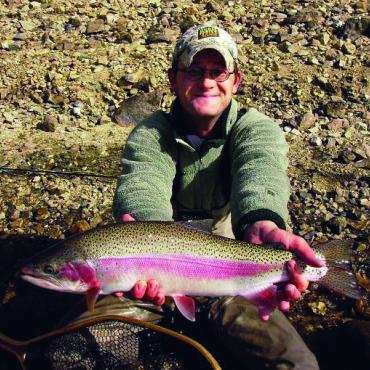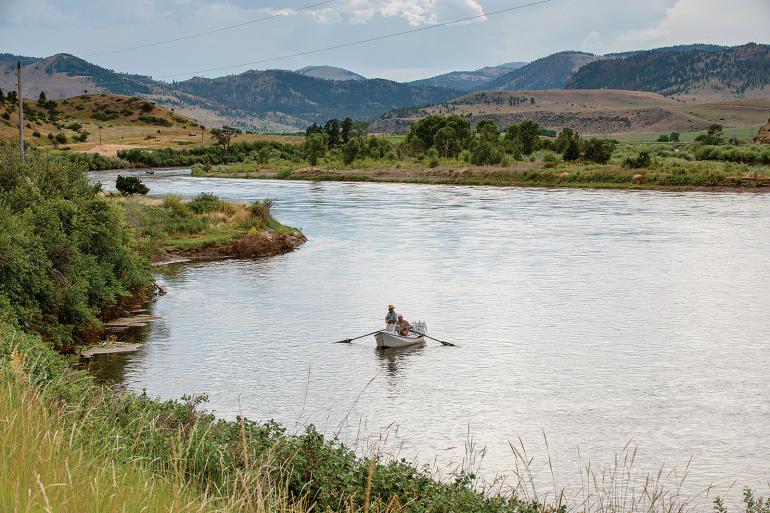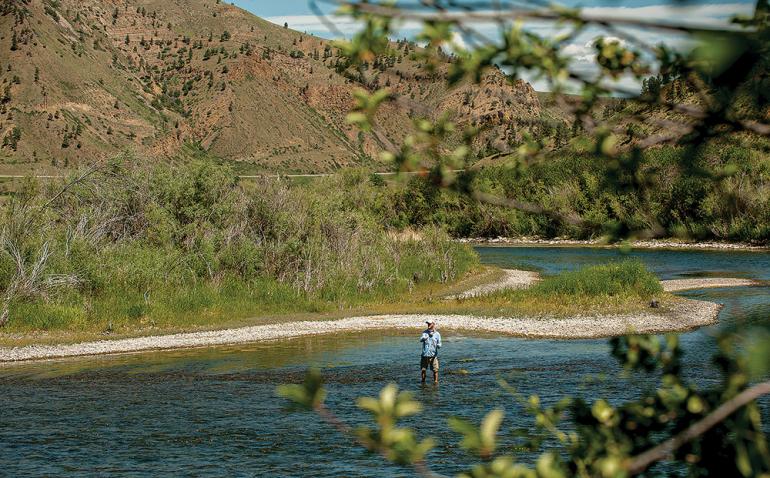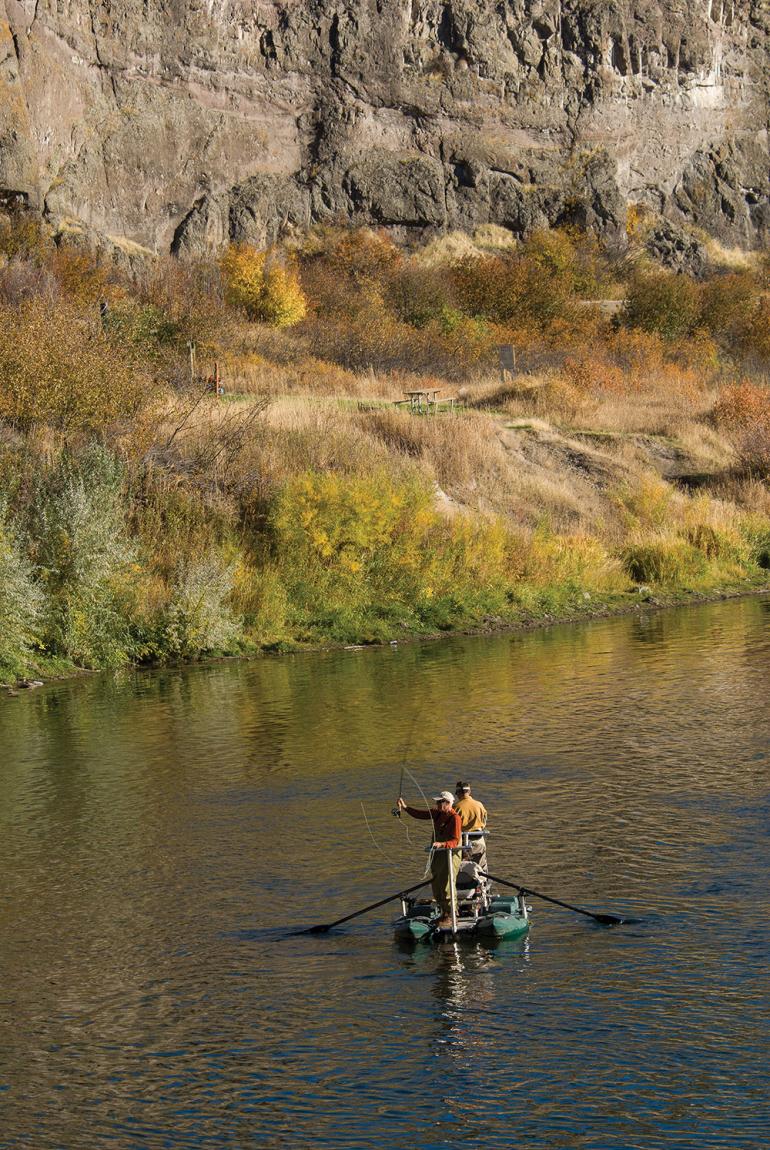Big & Mighty
Fishing the Missouri River.
Rivers are said to be the circulatory systems of continents. If so, the Missouri is the aorta of North America. It was the Missouri that served as the open road for Lewis & Clark and the Corps of Discovery. After the Mighty Mo joins the Mississippi, this river system drains three-quarters of North America’s landmass into the Gulf of Mexico. Its point of origin is where three of Montana’s fabled fisheries (Madison, Jefferson, Gallatin) combine. Additionally, the Mighty Mo picks up the Yellowstone River shortly after it crosses the North Dakota border. It’s no wonder that the Missouri is one of the most productive fisheries in the state of Montana, and a critical water resource for a majority of the Great Plains region.
Access
The adventurous and versatile angler can find good float fishing along the river’s entire length. Access in the upper reaches is good, but access points are several miles apart, and the flows tend to be relatively slow. From Headwaters to Toston Dam, floats are long, providing incentive for an overnight excursion. It is also highly recommended that shuttle logistics be ironed out well in advance. The same advice applies for the section from Toston Dam downstream to Canyon Ferry Reservoir. It is arguable that the best access and the most consistent angling opportunities occur from Holter Dam, just upstream from Craig, to Cascade. Both float and wade access along this stretch are great. Many of the wade-in accesses along this portion are operated in partnership with private landowners. As long as everyone continues to be responsible and respectful to private interests, these sites should remain open. Several boat ramps and launch sites between Holter Dam and Cascade allow for a wide variety of float lengths and angling options. As previously mentioned, options above Canyon Ferry are much more limited.
Flows
During peak angling season—mid-April through late October—flows on the Missouri generally run between 3,000 and 6,000cfs. Even though the Missouri is a classic tailwater, flow levels are still highly influenced by seasonal snowpack and rainfall. Spring runoff can bump flows up into the 10,000cfs range and higher. Sustained flows greater than 8,000 are pretty rare, but they are possible. In the spring of 2011, average flows did not drop below 7,500 until mid-July. Wading anglers are warned to avoid the river during these conditions.
Ideal flow levels for float angling are 5,500-7,500cfs. At the higher end of this spectrum, fishing can be difficult, so it can be highly beneficial to utilize a boat to access more varied types of holding water.
When to Go
Seasoned anglers know that the Mo’ is a year-round trout factory. Given all the dams, water temperatures tend to remain relativity consistent. Provided stable windspeed and air temperature, midge hatches are common any month of the year. These tiny insects are a staple food source to most Missouri River trout, especially during the winter months and into early spring.
As the days grow longer and temperatures inch upward, massive clouds of blue-winged olives begin to appear. These bugs, not unlike the aforementioned midge, tend to like cooler, overcast conditions, especially those that occur on a steadily-falling barometer. Therefore, the blue-winged olive is also a consistent food source in the early-fall months as well. Somewhat similar to Montana’s other trout rivers, fishing can turn on from mid-June though mid-July. The primary reason for this increased activity is the sheer variety of insect life combined with long periods of daylight, notably the extended pre-dawn and twilight times. Pale morning duns, numerous species of caddis, March browns, and brown drakes all hatch during the peak months of summer. The diversity of bugs can make it difficult to pin down exactly what the fish are eating. Focus on smaller-sized mayfly patterns, as these tend to be the most prolific types of insects during any hatch period.
As the summer months progress, dry-fly fishing trends toward terrestrials and the standard sub-surface fare like scuds and midge larva patterns become solid bets during daylight hours. Thick clouds of dry flies will fill the air in the early mornings and late evenings. Usually around mid-September, larger species of caddis begin to appear. Big patterns like #8 orange or brown October caddis offer up a high-calorie meal to winter-prepping fish, and it is a good idea to keep a collection of patterns that represent these insects’ entire life cycle. Fall is also streamer season and possibly the best opportunity to catch one of the rare bruiser browns that prey on smaller fish in preparation for the spawn. This is also an ideal time for the gear angler to chuck swimbaits, spoons, spinners, and stick baits.
Row vs. Wade
For the most part, the Mo’ is a wide and easy-flowing river. The streambed consists mainly of small gravel, which during average flows can make for easy wading. However, due to the size and width of this river, wade angling requires a fair amount of patience, stealth, and some lower-body strength; a wading staff is also highly recommended to probe for deeper holes, and the occasional boulder or sunken log.
Float-fishing allows anglers to cover much more water and reach areas and habitat that are simply impossible to access via wade fishing. Floaters should remember that wading anglers have the right of way, and when floating by, to give them as much room as possible.
Regulations
The Missouri is open year-round. Locals should focus on the shoulder and winter seasons to avoid crowds and guide traffic. The river is managed as a wild-trout fishery, so specific restrictions apply to sizes and daily limits. Carry and study the regulations, especially if you plan on keeping your catch.
Getting There
From Bozeman, head west on I-90 toward Three Forks. Take the second exit to Hwy. 287 north. This stretch of scenic highway parallels the Missouri for roughly 100 miles.
Kurt Dehmer owns Durty Kurty’s Guide Service.















